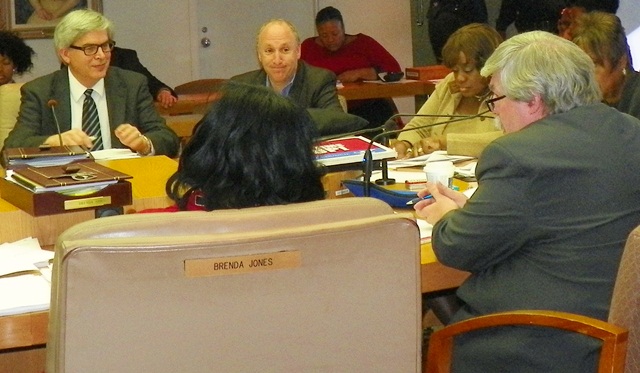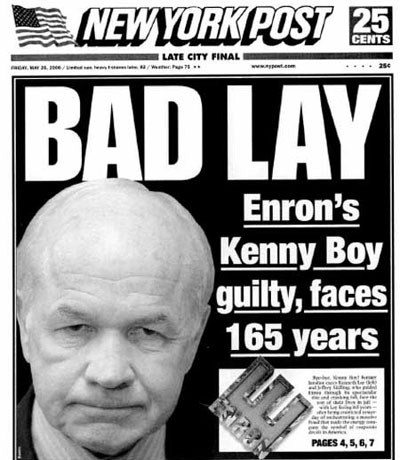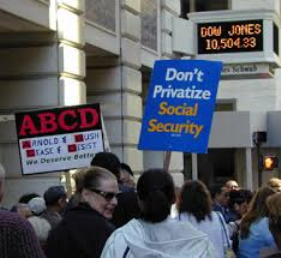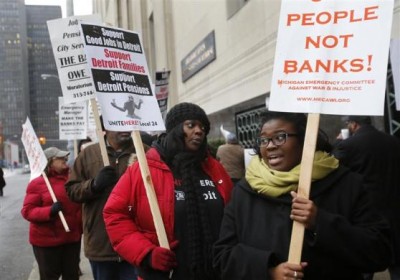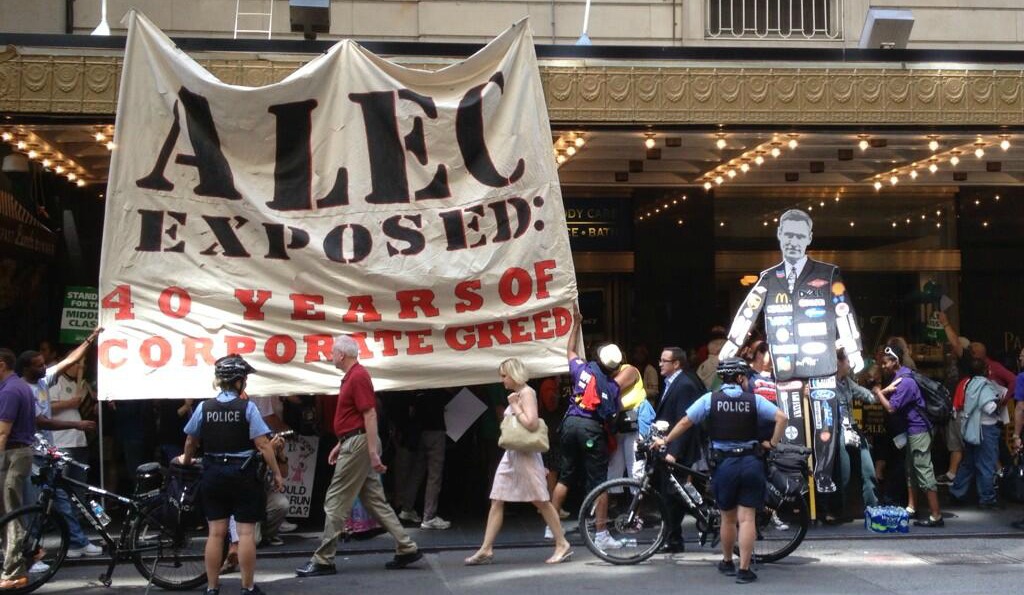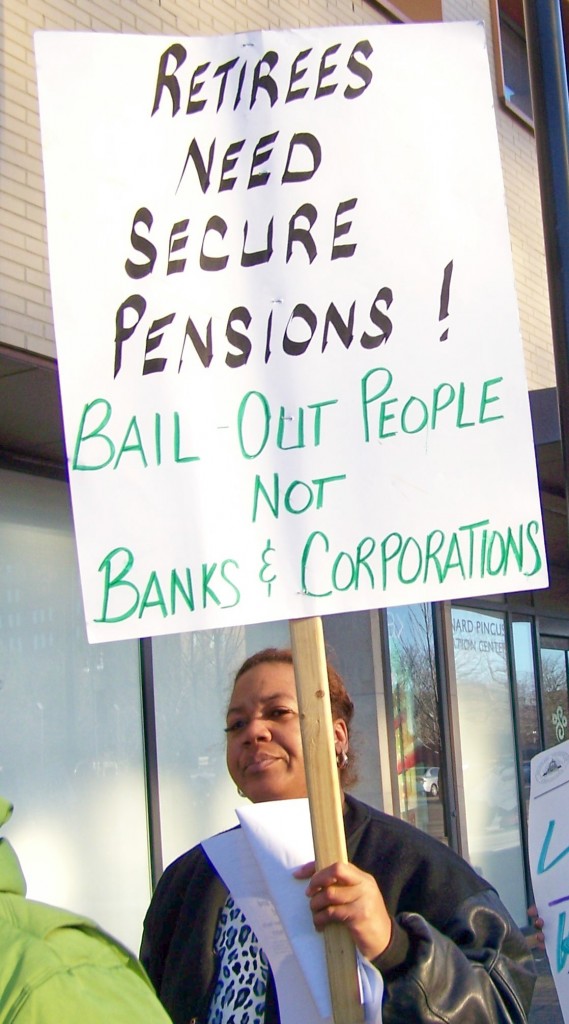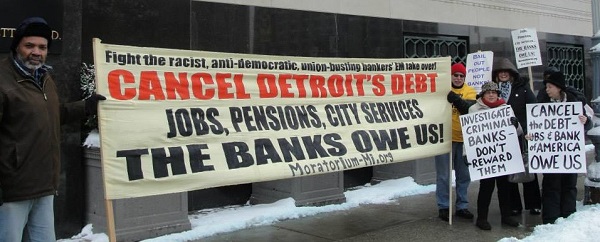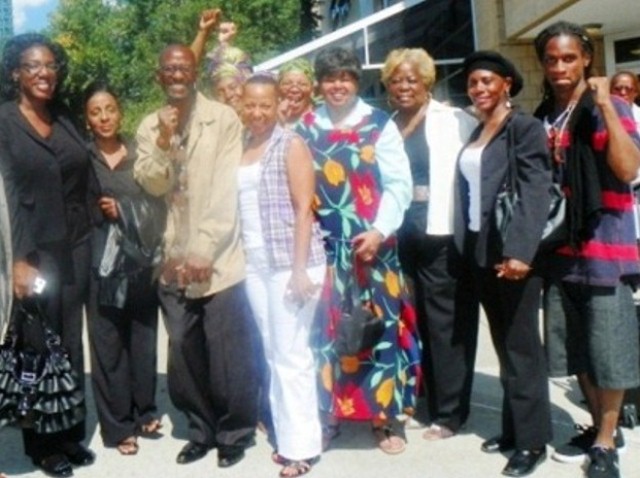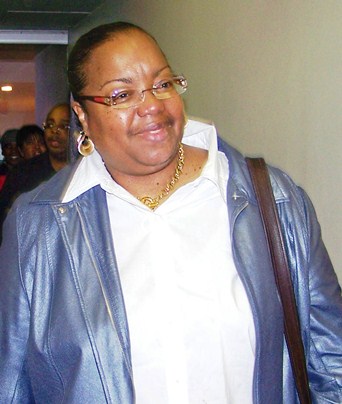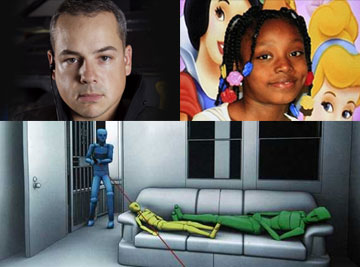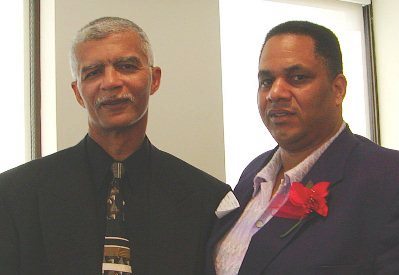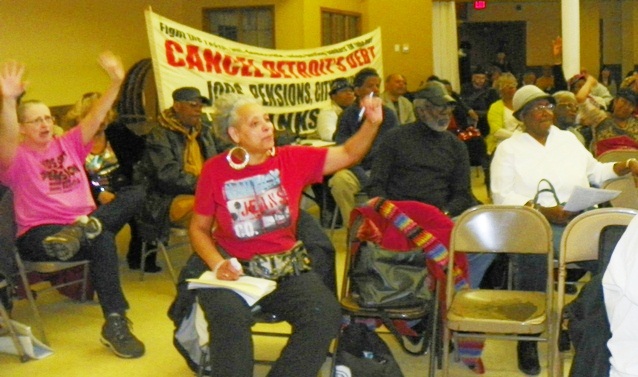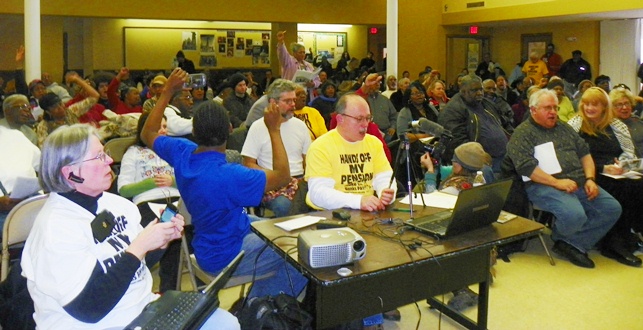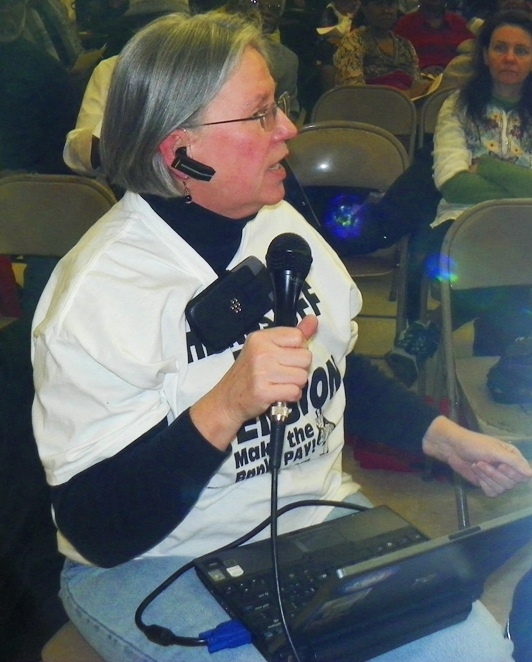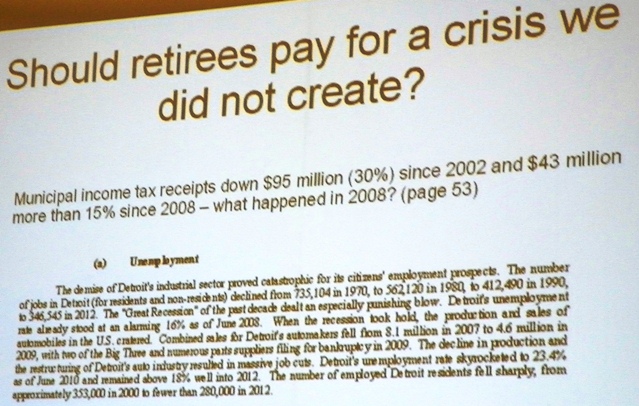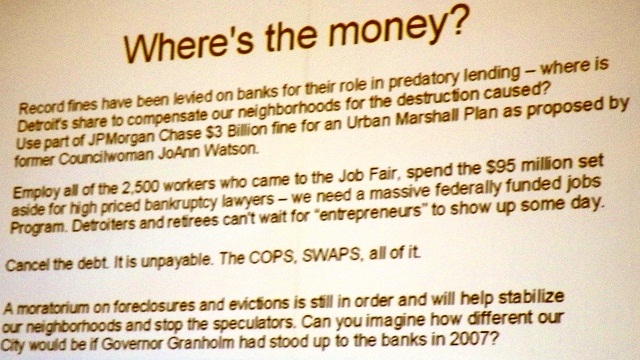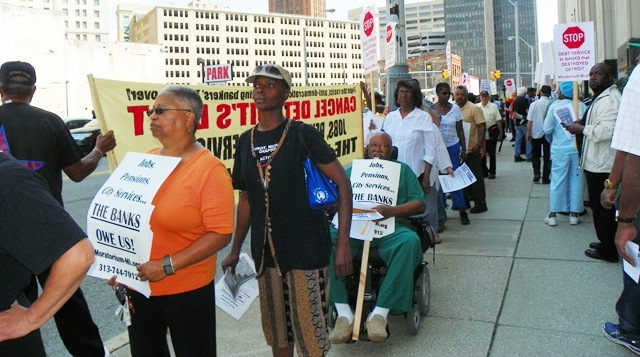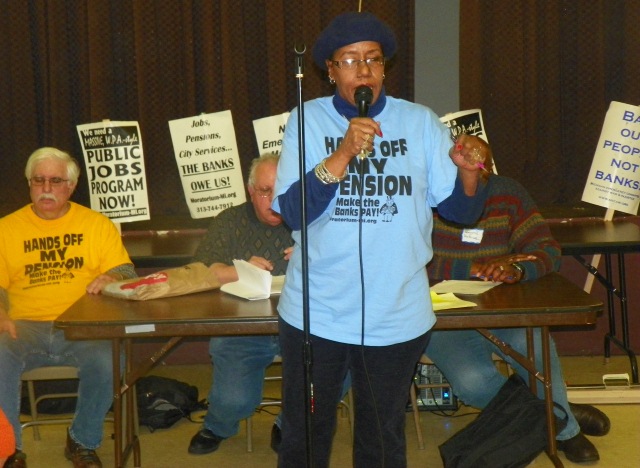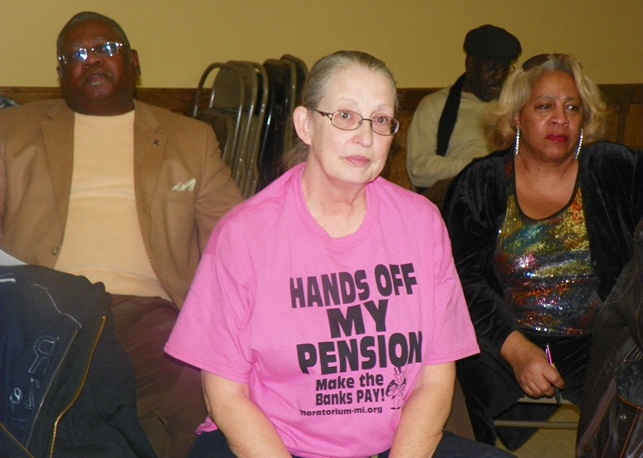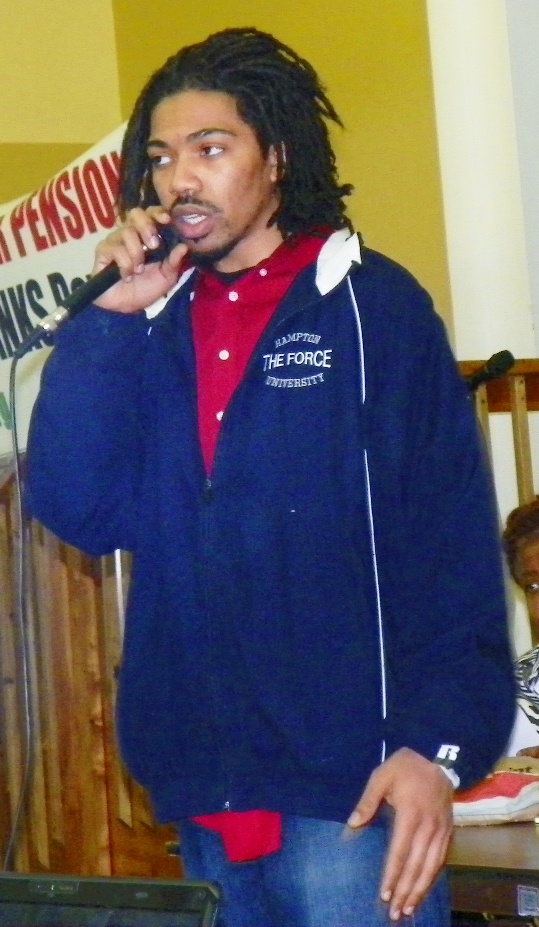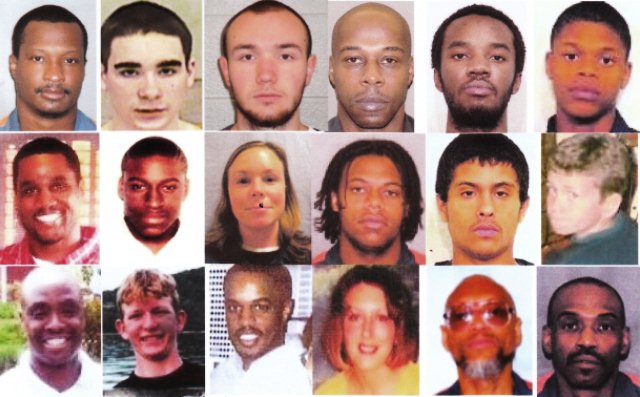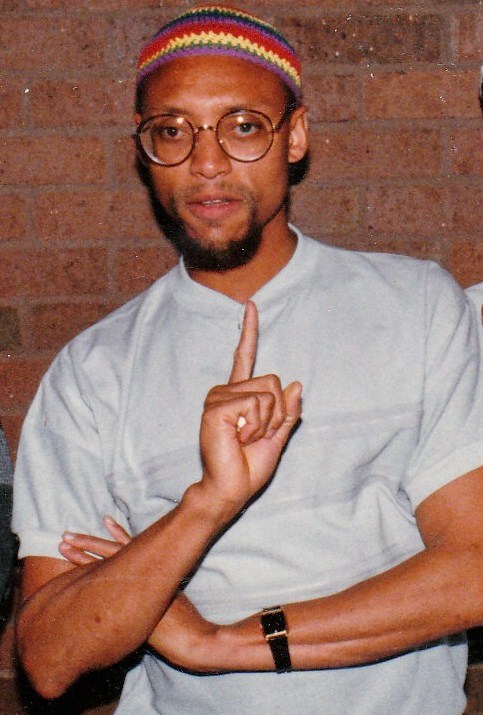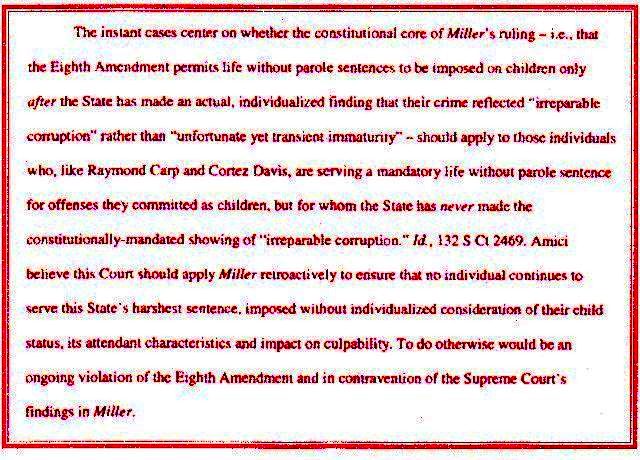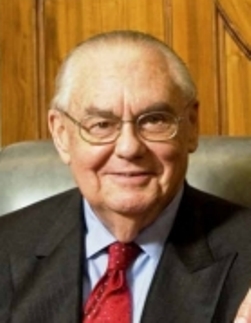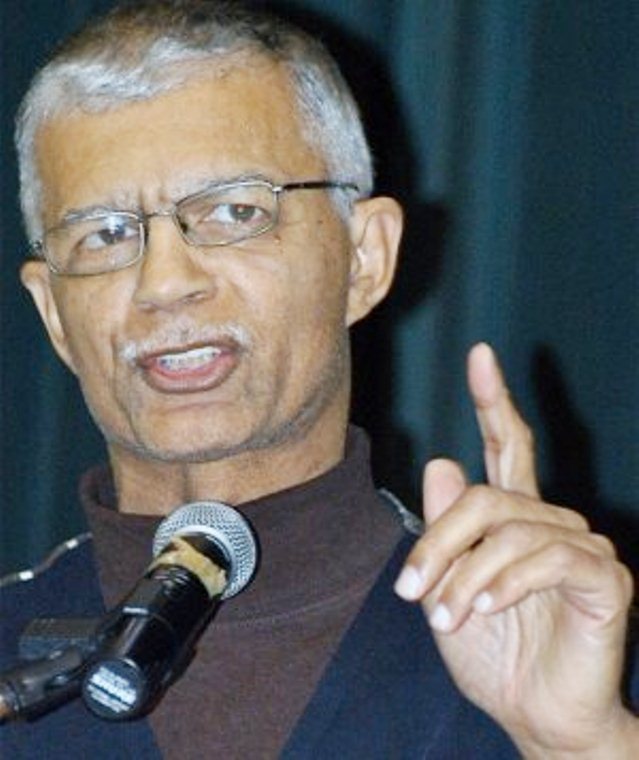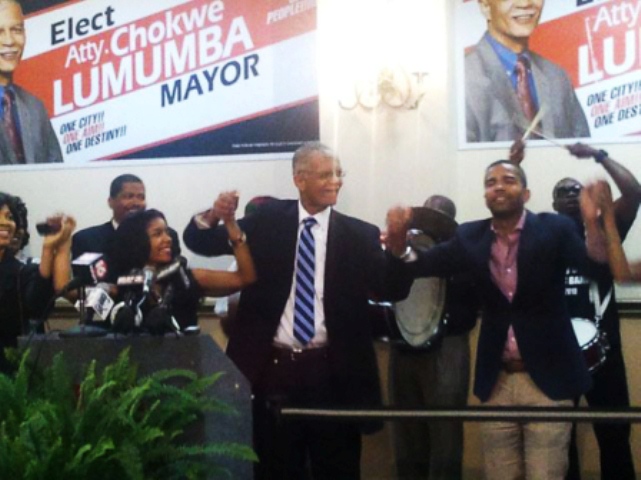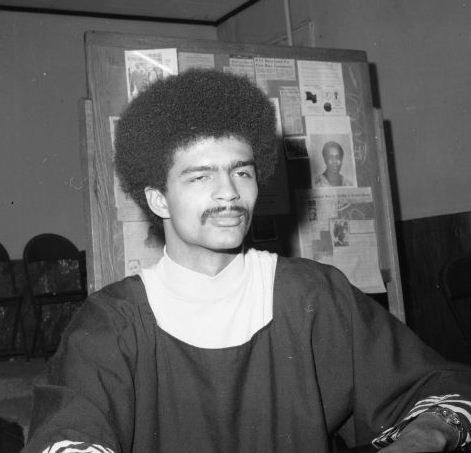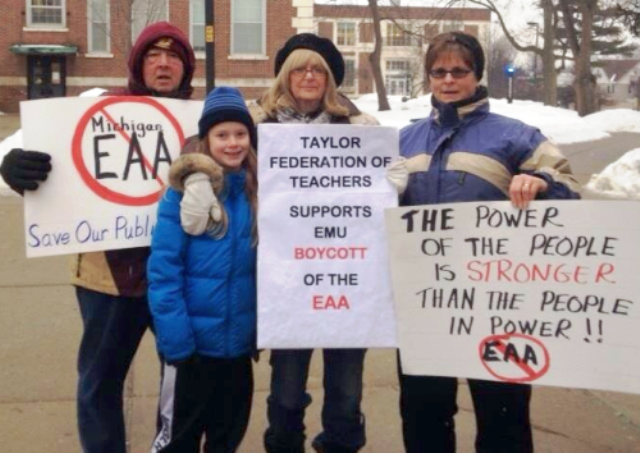
Rally against EAA at Eastern Michigan University.
(Note from VOD: this shocking development shows why Detroiters and state residents must move BEYOND electoral politics to direct action to save their city and state. VOD has long raised the need for a NATIONAL MARCH ON DETROIT, A NATIONAL STRIKE TO SAVE THE CITY THAT IS THE BIRTHPLACE OF THE UNION MOVEMENT, AND A BOYCOTT OF MAJOR MICHIGAN BUSINESSES.)

- Sherry Gay-Dagnogo is applauded at Detroit City Council meeting Aug. 30, 2012 for her remarks on campaign for equal treatment for Black and Latin majority school districts.
By Sherry Gay-Dagnogo, M. Ed.
March 21, 2014
“Power Concedes Nothing Without A Demand!” –Frederick Douglass
I love the quote by Frederick Douglass “Power Concedes Nothing Without A Demand!” I suppose if I were to offer one amendment, it would be the inclusion of “A Collective” Demand. With the attacks we’re facing in Michigan, it will take a coalition of men and women that will unite around a common agenda which protects our children, seniors, labor, and democracy.Dr. King said “In the End, we will remember not the words of our enemies, but the silence of our friends.” – Martin Luther King, Jr.
Yesterday’s passage of HB 4369 (EAA Expansion) is disappointing, and the encroachment upon our justice system to remove seats from 36th District Court and Third Circuit Court. So here we are, a place to mark in Detroit’s history where many have either become numb to the ongoing attacks resulting in the greatest loss of power we’ve know since the Civil Rights movement, or they refuse to speak out for fear of retribution.
EAA Passes House Amid Passionate Debate (Excerpt from MIRS)
After weeks of behind-the-scenes talks, it was two Detroiters today who helped get a bill through the House that could one day allow the Education Achievement Authority (EAA) to operate in more schools.
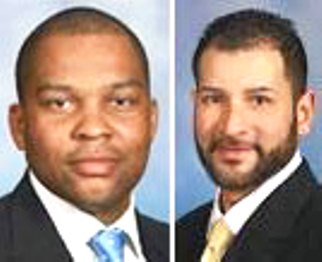
- State Reps. John Olumba and Harvey Santana, both D-Detroit, sold out Michigan students with their vote on the EAA.
After fierce attacks from Democrats, members voted 56-54 for HB 4369, which supporters say would provide the state with more options for trying to turnaround failing schools that find themselves in the State School Reform/Redesign District (SSRRD).
The only non-Republican votes in those 56 — the minimum needed to get a bill through House — came from Reps. John OLUMBA (I-Detroit) and Harvey SANTANA (D-Detroit)
And they both spoke out in favor of the bill on the House floor today.
Much of the focus of their comments was that lawmakers needed to move beyond the political discourse to take definitive action to help students in failing schools.

Detroit educational leaders adamantly oppose EEA during forum Aug. 2, 2012. Detroit School Board member Elena Herrada is speaking,
The EAA, which features a longer school day and a longer calendar, has “great possibilities,” Olumba argued.
Santana said the system isn’t perfect, but is “progress.”
“I refuse to play politics with our children’s future,” he said at one point.
Olumba, Santana and a handful of amendments helped get a bill through the House today that had been waiting since December.
It’s a bill that has the support of Gov. Rick SNYDER, who touted the House’s vote in a press release.

- Michigan Gov. Rick Snyder and his appointed Detroit EM Kevyn Orr announce disastrous filing of bankruptcy for Detroit July 28, 2013.
“The legislation expands opportunities for intermediate and local school districts to be involved in turnaround efforts as well as offers innovative options like the Education Achievement Authority and charter public schools,” Snyder said.
“These changes will encourage innovation, including longer school days and calendars, to help students in struggling schools reach their full potential.”
But Democrats see the bill as merely an attempt to expand the EAA’s reach across the state. The EAA, which currently operates 15 schools in Detroit through an interlocal agreement with Eastern Michigan University, hasn’t proven its self, the Democrats said.

- State Rep. Theresa Abed/Facebook
On the floor, Rep. Theresa ABED (D-Grand Ledge) labeled the EAA an “experiment gone bad.” And Rep. Doug GEISS (D-Taylor) said the authority has “achieved nothing.”
Rep. Brian BANKS (D-Harper Woods) also spoke against the bill.
“As a parent, as an aunt, as an uncle, would you send your child to the EAA?” Banks asked his colleagues. “Would you send your children to a school that has multiple safety concerns, failing academics, high teacher turnover?
“I think we know the answer, Mr. Speaker, and the answer is no.”
I ask…Where is our leader? Where is our collective voice? Everything thing that has been fought for; our basic freedom and liberties are being rescinded with the push of one legislative button.
I shall never forget March 20, 2014 for as long as I live. But now we must move forward with an even greater resolve to ensure Democratic victory 2014. I strongly believe #TogetherWeCan. I hope you will join me Thursday, April 10, 2014, 5:30 p.m., Hustle & Flow, T.U.L.C. 8670 Grand River, Detroit, MI. Donation: $20.14.
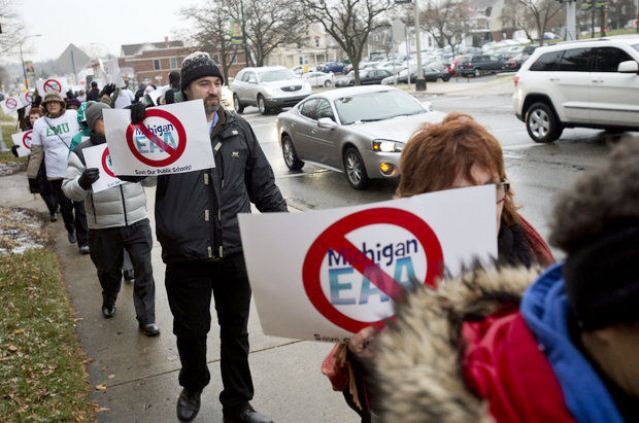
Opponents to the Education Achievement Authority march in front of Welch Hall on Cross Street at Eastern Michigan University in Ypsilanti December, 2013. Many were members of the American Association of University Professors. Photo: AANews
MEAP COHORT DATA REVEAL STAGNATION AND DECLINE IN EAA STUDENT TEST ACHIEVEMENT
Results contradict EAA’s previous claims of phenomenal growth

- Dr. Thomas Pedroni speaks at Lansing rally against Michigan EAA.
“The 2013 MEAP cohort data show us, convincingly, that most EAA students failed to make even marginal progress toward proficiency. The portrait is even grimmer for the small number of students who had entered the EAA already demonstrating proficiency. In math, 66% are no longer proficient. In reading, 37% are no longer proficient.”
By Dr. Thomas C. Pedroni
March 3, 2014
For better view of graphs, which did not copy in color, see original article at: https://sites.google.com/site/detroitdataanddemocracyproject/MEAP-Cohort-Data-Reveal-Stagnation-and-Decline-in-EAA-Achievement
2013 MEAP cohort data published Friday by the Michigan Department of Education provide a stark contrast to EAA claims, dating back to February 2013, of fantastic student achievement gains on its quarterly performance assessment.
 Because the cohort data enable MDE to track individual student progress from year to year, they provide us with the most reliable picture of student test performance and test score growth over time. Unlike proficiency scores that tell us the proportion of students who met MDE’s proficiency cut score, cohort data use students’ mean scale scores to chart student growth. Since mean scale scores are based on students’ raw test scores, they give us a picture of student achievement test growth even if students have not yet obtained proficiency.
Because the cohort data enable MDE to track individual student progress from year to year, they provide us with the most reliable picture of student test performance and test score growth over time. Unlike proficiency scores that tell us the proportion of students who met MDE’s proficiency cut score, cohort data use students’ mean scale scores to chart student growth. Since mean scale scores are based on students’ raw test scores, they give us a picture of student achievement test growth even if students have not yet obtained proficiency.
The cohort data are especially important because, as the EAA has rightly maintained, students who start out so far behind might take a few years to reach the proficiency cut score, even if they are making steady progress from year to year. Thus, while proficiency rates are not a good measure of whether or not the EAA’s students are progressing on tested curriculum, the cohort data are.
So what do the cohort data tell us?
In all, MDE successfully matched 1,377 students from their 2012 math MEAP performance to their 2013 math MEAP performance, and 1400 students from their 2012 reading MEAP performance to their 2013 reading MEAP performance. The matched math and reading cohorts, according to MDE, constituted 86.8% and 87.7% respectively of all 2013 EAA testers on those two tests.
The tracking of those students shows us, convincingly (see Table I and II below), that the majority of EAA students failed to demonstrate even marginal progress toward proficiency on the State’s MEAP exams in math and reading. Among students testing this year who did not demonstrate proficiency on the MEAP math exam last year, 78.3% showed either no progress toward proficiency (44.1%) or actual declines (34.2%). In reading, 58.5% showed either no progress toward proficiency (27.3%) or actual declines (31.2%).



 The portrait is even grimmer for the small number of students who had entered the EAA already demonstrating proficiency on the MEAP.
The portrait is even grimmer for the small number of students who had entered the EAA already demonstrating proficiency on the MEAP.
During the 2013 administration of the MEAP math test, there were a total of only 56 test-takers who had scored proficient the year before. Of those 56 students, only 10 stayed at the same level of proficiency or improved (see Table I). That means that 46 of those 56 previously proficient students actually declined—became less proficient. 26 of those 56 had what the MDE terms significant declines. Another way of saying this is that of those 2013 test takers who had scored proficient the year before, 82.1% declined in proficiency in just one year with the EAA. Only 7.1% increased in proficiency, while 10.7 percent stayed the same.
In fact, only 19 of the 56 students who tested as proficient in math in 2012 remain proficient now. 37 children—two thirds of those previously proficient—have gone far enough the wrong way on the tested curriculum to no longer be considered proficient (see Table III). Among the students who entered the EAA already proficient in reading, 37% are now no longer proficient (see Table IV).
TABLE IV.

| NOTE: 1377 students (86.8%) were successfully matched from Fall 2012 to Fall 2013 |
|
|
Source: Michigan Department of Education

The cohort data, as mentioned earlier, contrast markedly with the EAA’s claims of unprecedented student academic growth on the EAA’s quarterly Performance Series tests. According to the EAA, those tests demonstrated that in the 2012-2013 school year alone, “64% of students across all 12 schools that are directly run by the Education Achievement Authority achieved a year or more’s growth in reading, and 58% achieved 1.5 year’s growth or more.” Furthermore, “68% of students across the 12 direct run schools achieved a year or more’s growth in math with 59% achieving 1.5 year’s growth or more.”
Despite research dating back to last May that raised serious questions about the validity of those claims, the EAA has highlighted its achievement claims in advertisements and other promotions to help it fight its 24% enrollment slide after its first year of operation. It has been aided in its recruitment efforts by Excellent Schools Detroit, which publishes an annual school report card to help families choose schools for their children. Despite being aware of critics’ concerns, ESD praised the six EAA elementary schools, calling their claimed progress “promising”.
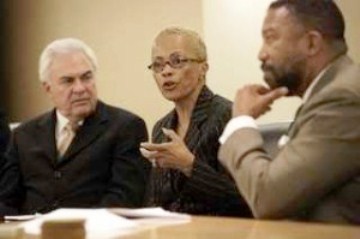
- Charter schools advocate Doug Ross, Carol Goss of Skillman Foundation and former DPS EFM Robert Bobb at 2010 meeting of Excellent Schools Detroit. Goss later became VP of the EAA. Photo: Diane Bukowski
Although Excellent Schools Detroit advertises itself to Detroit’s families as an objective source of school data compiled to help families in pinpointing and selecting quality schools for their children, the connections between ESD and the EAA suggest a much closer relationship. The current Chair of both EAA administrative boards, Carol Goss, incubated and funded Excellent Schools Detroit in 2010 in her capacity as CEO and President of the Skillman Foundation.

- Eli and Edythe Broad of the anti-public schools Broad Foundation.
Goss, who also served as ESD Chair until December 31, 2013, serves on the three-member board of the Michigan Education Excellence Foundation, through which funds are funneled from the Broad Foundation, the Bloomberg Foundation, and others, to the EAA. Both ESD and the EAA are reported to have a fiduciary relationship with the Michigan Education Excellence Foundation, although ESD CEO and President Dan Varner insists that ESD does not have such a fiduciary relationship. Five current or recent ESD board members, including EAA Chancellor Covington and Goss, who served as ESD Chair until December 31, 2013, currently serve or have recently served on the EAA board.
The staggered release of the MEAP data is also noteworthy. While the public only gained access to the results of the MEAP this past Friday, February 28, State Superintendent Michael Flanagan shared with me via personal email that school district administrators, including EAA administrators, had received the MEAP results on January 27.

- John Covington
According to a member of the State Board of Education, Flanagan had already decided to terminate the exclusivity agreement between the MDE’s State School Reform/Redesign Office and the EAA by February 5, although this announcement was not made public until February 18. February 5 is also around the time that Republican legislators initiated a sudden aggressive push for passage of HB 4369—legislation that would codify and expand the EAA, but that had been languishing in the legislature for over a year due to insufficient votes for passage.
EAA observers have speculated that these moves by Flanagan and Republican legislators were at least in part instigated by their awareness of what the MEAP cohort data revealed about the EAA’s performance. Flanagan, admirably, asked EAA Chancellor John Covington for an immediate voluntary termination of the EAA’s exclusivity agreement with the State School Reform/Redesign Office. When Covington did not respond to this request, Flanagan went public on February 18 with a letter giving the EAA the required one-year notice for termination of the exclusivity agreement.
The specter of student stagnation and decline in the EAA provided by the MDE’s MEAP cohort data fits well with what we know of the EAA’s learning environment based on numerous published accounts from current and former EAA teachers. At the same time, the cohort data further undermine the EAA’s insistence that their students have made unprecedented gains in academic achievement in tested curriculum.
Related articles:
Michigan cancels EAA’s exclusive responsibility for state’s failing schools
From The Detroit News Feb. 19, 2014

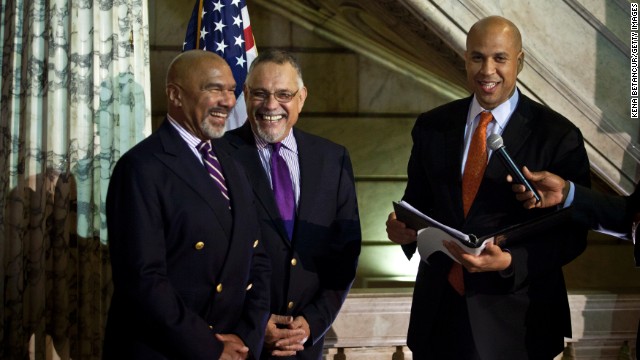

 In addition to United States v. Windsor, Friedman also pointed to Loving v. Virginia — in which the Supreme Court ruled that Virginia’s ban on interracial marriages was unconstitutional.
In addition to United States v. Windsor, Friedman also pointed to Loving v. Virginia — in which the Supreme Court ruled that Virginia’s ban on interracial marriages was unconstitutional.































